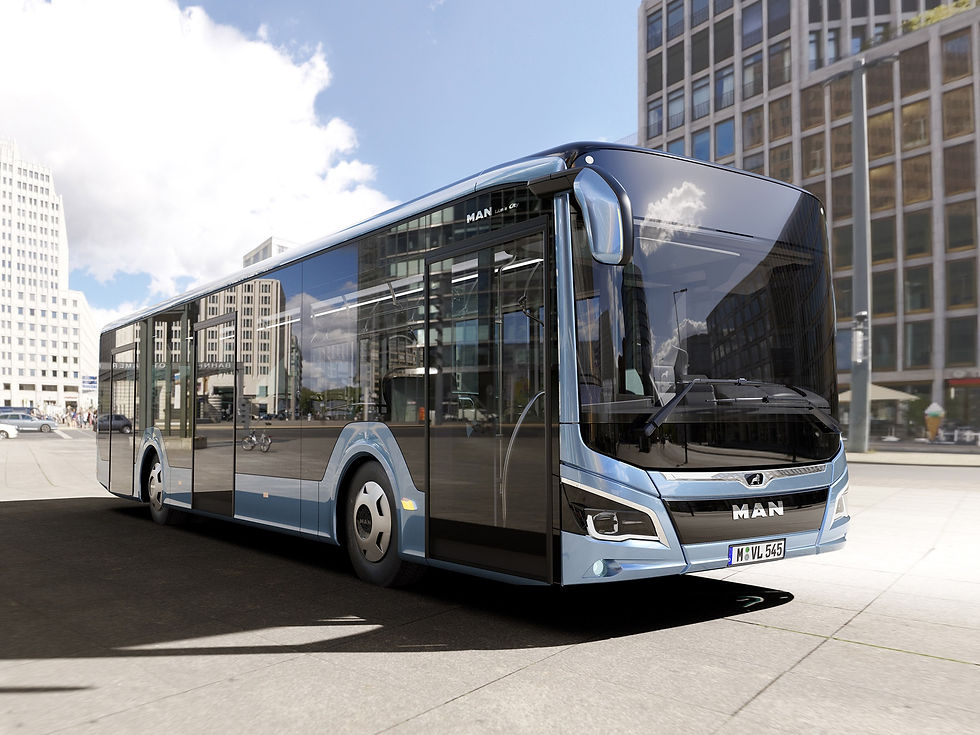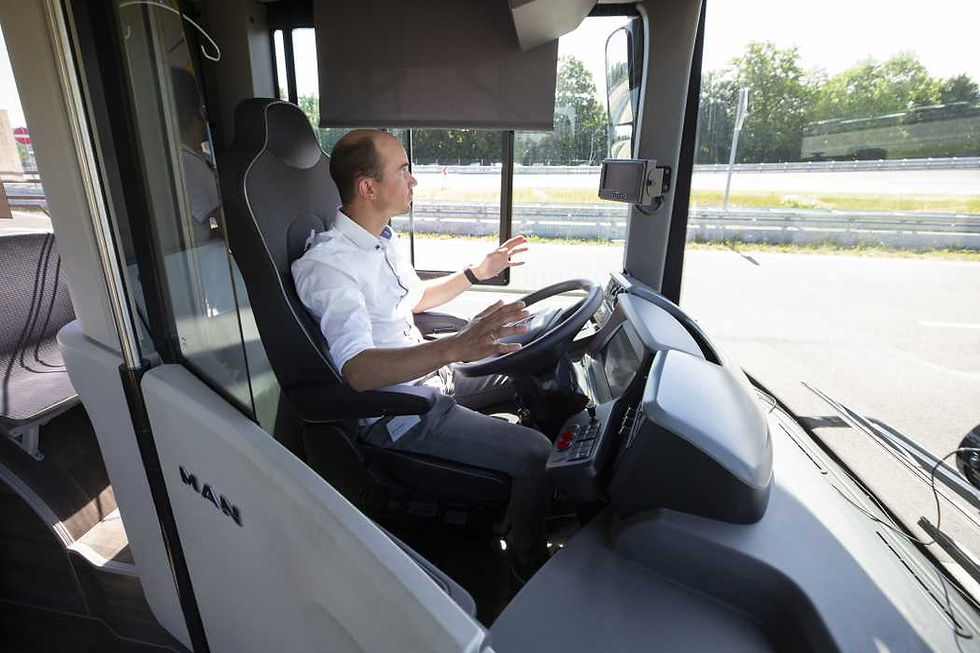Robobuses in the Fast Lane: MAN's Bold Drive Toward Autonomous Public Transport.
- Xavier Tackoen

- 18 juil.
- 3 min de lecture
The future of public transport is not just electric, it’s autonomous, sensor-packed, and heading to a stop near you. While robotaxis often steal the spotlight, a quieter revolution is unfolding on city streets: the rise of the self-driving bus. And German manufacturer MAN Truck & Bus is firmly behind the wheel (metaphorically).

By 2030, Your City Bus Might Not Have a Driver
MAN isn’t just dipping its toes into automation. With several major research projects underway — like MINGA, @CITY, and BeIntelli, the company is aiming to put fully autonomous, electric city buses on the road by 2030. The goal? SAE Level 4 automation: vehicles capable of operating without a human driver in specific, well-defined urban environments. In other words, the kind of bus that picks you up, takes you to work, and never once asks for a coffee break.
Safety First, And Second, And Third
If the idea of a driverless bus makes you nervous, you’re not alone. That’s why MAN is building in redundant safety systems. That means every critical function from brakes and steering to the driving software itself has backups. These buses are being designed to be not just smart, but extremely safe, so that in the future, they’ll no longer need a human onboard at all, even in case of malfunctions.
MINGA: Munich’s Testing Ground for Robo-Rides
A big piece of this puzzle is the MINGA project (Munich’s Automated Public Transport), launching test operations in 2026 with MAN’s fully electric Lion’s City E buses. While these initial test runs will still have a safety driver, the long-term goal is full autonomy. These tests focus on making sure the automated driving system (ADS) works seamlessly with the vehicle’s interface and new digital systems rolling out with MAN’s 2024 bus models.

From Precise Parking to Explaining AI: What’s Already in Motio
Before MINGA, MAN tested specific features in the @CITY project, like precisely approaching bus stops, a deceptively tricky task in autonomous driving. In 2022, they showed off successful demos, paving the way for full integration.
Meanwhile in Berlin, the BeIntelli project is turning heads. Picture this: a sleek electric bus rolling past the Brandenburg Gate, loaded with 60 sensors and components that don’t just do the driving, they also explain it. Called the “Explanation Bus,” this vehicle shows passengers exactly how and why it’s making decisions, helping build trust in the tech.
So When Can You Hop On?
According to MAN’s roadmap, field trials with transport companies are expected before the end of the decade. These trials will fine-tune the tech based on real-world needs, from rush hour demands to how people actually feel about boarding a bus without a driver.
The finish line? A market-ready autonomous city bus by 2030. If successful, this could redefine how we view public transit, not just as a service, but as a sophisticated network of silent, self-piloting, zero-emission machines.
Did You Know? The MAN “Explanation Bus” isn’t just for show, it’s a real-time transparency tool. Through displays and interfaces, it shows riders why it’s braking, how it’s navigating, and what it sees. For curious passengers (and slightly nervous ones), that could make all the difference in embracing autonomous travel.
So, the next time you're standing at a bus stop, don’t be surprised if the driverless future pulls up right in front of you. Just make sure your ticket is valid and maybe ask the bus to explain itself.





Commentaires